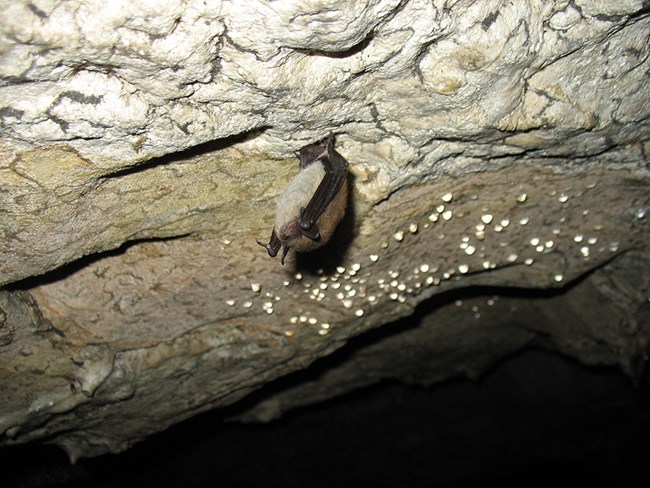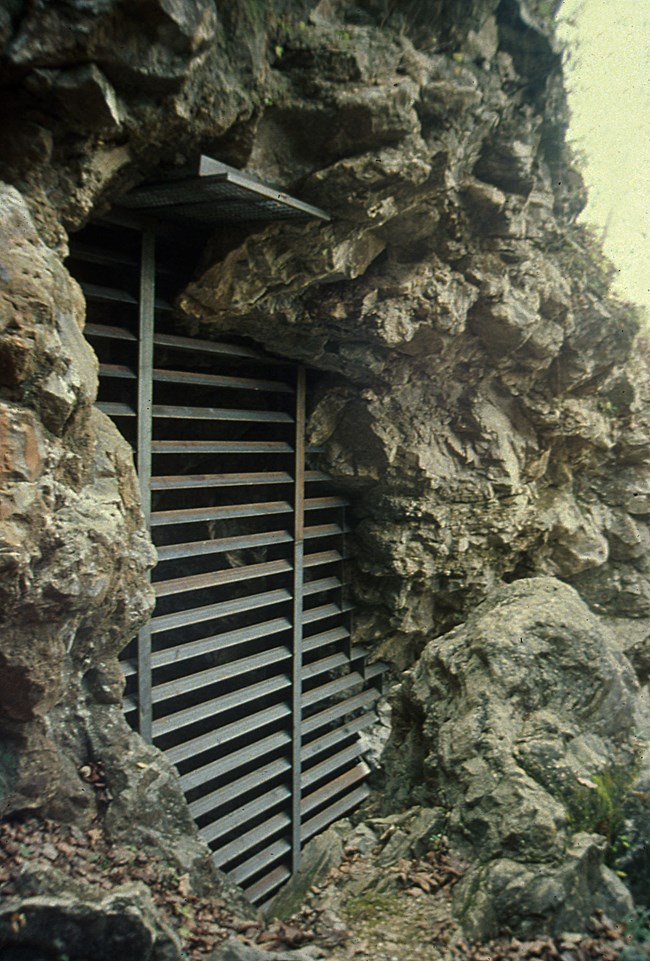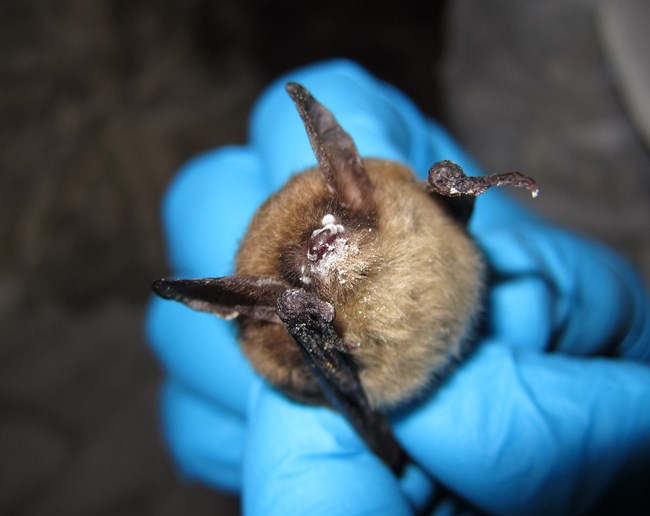Depending on the specific issues at a park, wildlife managers use a number of strategies to keep bats healthy and their habitats safe.

USGS / P. Cryan
Cave closures
Research and monitoring programs
Park staff and research partners use a variety of methods, such as mist netting, field surveys, emergence counts, and acoustic surveys to learn more about bats and where they live in parks. This information helps wildlife managers make science-based decisions for bat management and stewardship activities, like protecting important bat habitat and improving survival and health of bats in parks. Learn more about Studying Bats in National Parks.

NPS Photo
Cooperation with other agencies
Representatives from the NPS regularly collaborate with employees from other state and federal agencies, universities, and nonprofit organizations. This cooperation helps protect bats beyond park boundaries because bat habitat and migration routes extend beyond parks. For example, NPS staff are actively involved in the national response to WNS.
Bat-friendly cave and mine entrances
Several parks have installed bat gates or bat cupolas on cave and abandoned mine entrances. For example, the Skidoo Mine in Death Valley National Park has a bat cupola, and in 2015 New River Gorge National River installed gates into 11 abandoned coal mines. These coverings are designed specifically to allow bats to enter but to keep larger mammals (like humans!) out. This gallery has photos of bat gates and cupolas across the NPS.
Outreach and education
Each year nearly 300 million visitors come to explore nature and learn about the fascinating wildlife, cultural stories, unique geologic features, and other natural resources in national parks. Through interpretive programs, informational displays, and special events, parks help to spread the word about the importance of bats and what we all can do to help protect them and their habitats.

USFWS Photo
Preventing spread and impacts of white-nose syndrome
Since WNS was first discovered in 2006, the disease has killed millions of bats and continues to spread across North America. The NPS is helping to slow the spread and protect bats by regulating access to caves and mines, cleaning or restricting use of clothing and gear between caves, and funding research and management projects in parks. These projects help NPS staff learn more about bats in parks and educate visitors both about the benefits of bats and what NPS is doing (and they can do, too!) to support bat conservation.
Find out how you can
Help Bats!Last updated: October 24, 2024
